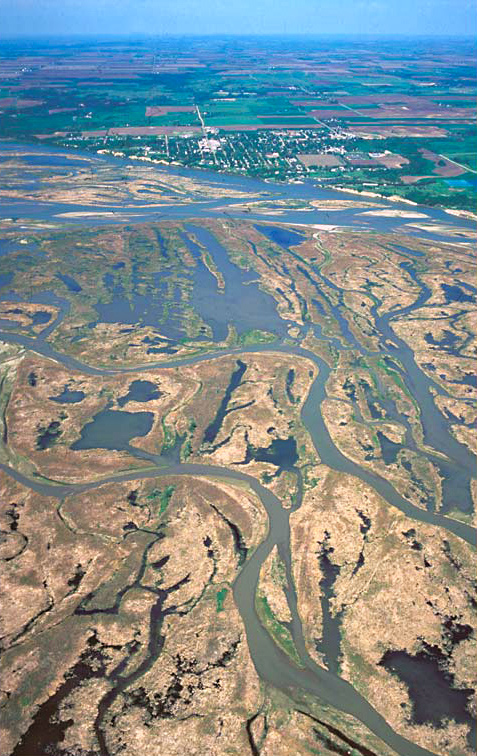This labyrinth is made of sandy silt deposited as the Missouri’s current slows down and spreads out upon entering Lewis and Clark Lake near Springfield, South Dakota. Gavins Point Dam created the twenty-five-mile-long, forty-five-foot-deep reservoir in 1957. Six such structures have squeezed, shaped, and disciplined the Missouri for so long that it is hard to say whether any of it could have been this complex when the Corps of Discovery passed through. However, Sergeant Gass reported that in this vicinity they “found the hills on the opposite sides of the river generally not more than two miles apart, and the river meandering through them in various directions.”
In any case, the task of piloting the expedition’s boats efficiently through such windings and blind leads was the principal responsibility of Pierre Cruzatte, a French Canadian and Omaha Indian mixed-blood who, as a riverman, earned the respect and confidence of every member of the party. The many-talented Cruzatte was also admired as an interpreter, a cache digger, and a fiddler.
On 2 September, the men came upon the remains of an “antient fortification” of elaborate form and impressive dimensions, which Clark mapped and described in precise detail. Cruzatte informed him “that a great number of those antint [ancient] works . . . are in Different parts of this Countrey.” But it was all a misperception. The supposed bastions were merely old sandbars left high and dry by the errant river.
The Corps camped that night on solid ground somewhere below the bottom of this picture. Now two days after the captains concluded their council with the Yankton Sioux, the men were still “all in high spirits” despite blustery weather that slowed their progress. But the good mood was tempered by concern about 19-year-old Pvt. George Shannon, the youngest member of the Corps. He was already seven days overdue from a hunting assignment. Not finding their camp at the end of his first day, he had hurried upriver, thinking he was behind his comrades. Shannon would rejoin them at last on 11 September, after surviving for twelve days on one rabbit and lots of wild grapes.
From Discovering Lewis & Clark from the Air
Photography by Jim Wark
Text by Joseph Mussulman
Reproduced by permission of Mountain Press

